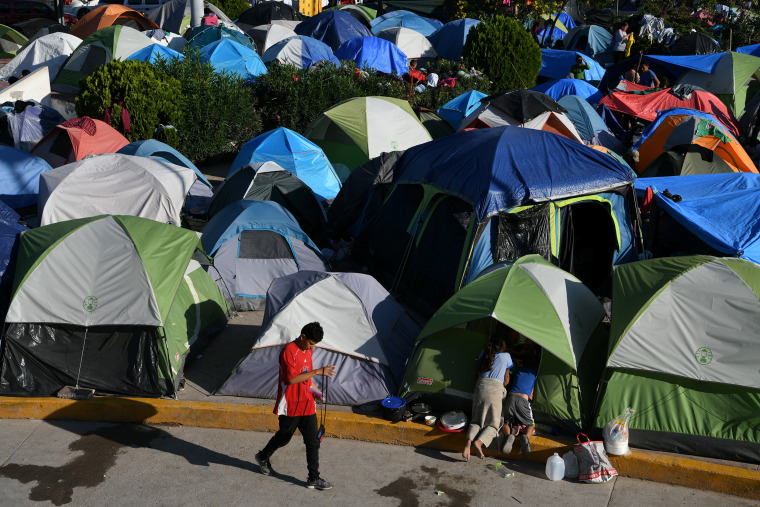WASHINGTON — Next week, the Biden administration will begin processing immigrants who have been waiting, often in poor conditions, under the Trump-era "Remain in Mexico" policy, and allowing them to live in the U.S. while they await rulings on their asylum cases, administration officials said Thursday.
The policy, also known as Migrant Protection Protocol or MPP, began in January 2019 and has been criticized as inhumane by international organizations as Central Americans often went without adequate shelter and became the targets of violence in Mexico as they waited months or more than a year before they were allowed to make their case for asylum in a U.S. court date. The officials estimated more than 25,000 migrants are currently waiting at the border under the program, and said they would begin allowing approximately 600 per day to enter.
The move is a step toward "humane processing at the border," said one official on a press call with reporters on Thursday.
Starting Feb. 19, asylum-seekers who have been waiting the longest or are considered vulnerable will be eligible to enter the United States as they await their day in court. The officials said the immigrants will not be detained, but rather kept on "alternatives to detention." Though the officials were not specific on what those methods would be, past alternatives to detention have included ankle monitors and routine check-ins to be sure migrants show up for their scheduled court hearing.
Download the NBC News app for breaking news and politics
The administration officials said immigrants should await further instructions rather than move toward any one port of entry at this moment. They also discouraged new migration, stating that new arrivals would not be eligible to enter the United States at this time.
"Those who do not have active cases will have other opportunities," one of the officials said.
Under what the officials called "phase one," asylum-seekers will be tested by an international agency for Covid-19 on the Mexico side of the border, then they will be transferred to one of three ports of entry where they will be processed and allowed to enter the United States as they await their next asylum hearing.
The officials said they expect two main ports of entry to process up to 300 people each per day in the first phase of their plan. They said they have been working with international organizations since the presidential transition to begin the process of ending the "Remain in Mexico" policy.



